Embarking on the vibrant journey of citrus farming in India opens doors to a world of tangy delights and economic opportunities. In this concise guide, we navigate through the citrus orchards, unraveling the cultivation costs, profit potential, and state-wise production insights. Citrus fruits are among the most important horticultural crops in India, occupying nearly 40% of the total area under fruit cultivation.
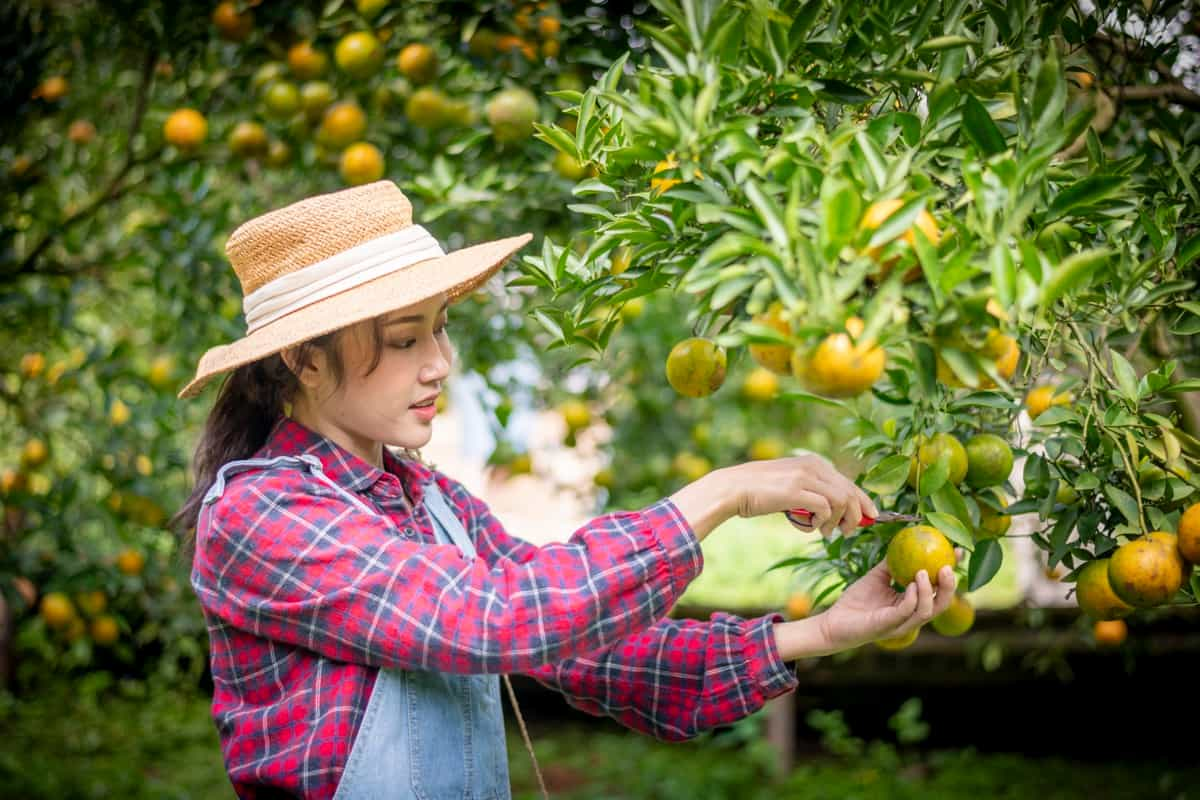
Citrus fruits include oranges, mandarins, lemons, limes, grapefruits, and pomelos. They are rich with vitamins C, A, B, and phosphorus and have many health benefits. Citrus fruits are also source of peel oil, citric acid, and cosmetics, which are in high demand in the global market. India third-largest producer of citrus fruits in the world, after China and Brazil, with an annual production of about 8.6 million metric tons.
Citrus fruits are grown in different agro-climatic zones of India, ranging from tropical to sub-tropical regions. The major citrus-producing states are Maharashtra, Madhya Pradesh, Tamil Nadu, Assam, Orissa, West Bengal, Rajasthan, Nagaland, Mizoram, Arunachal Pradesh, and Andhra Pradesh.
Varieties of Citrus Fruits Grown in India
Mandarin (Citrus reticulata): It is the most common and popular citrus fruit in India. It is also known as tantra or sarangi. It has a loose skin that can be easily peeled off. It has a sweet and juicy pulp with many seeds. It is consumed fresh or processed into juice, jam, squash, or syrup. The major varieties of mandarin grown in India are Nagpur mandarin (the best quality), Coorg mandarin (the most widely grown), Darjeeling mandarin (the most cold-tolerant), Khasi mandarin (the most acidic), Kinnow mandarin (the most productive), and Clementine mandarin (the seedless variety).
Sweet orange (Citrus sinensis): It is also known as mosambi or mausambi. It has a tight skin that is difficult to peel off. It has a sweet and sour pulp with few seeds. It is mainly consumed as juice or processed into marmalade or candy. The major varieties of sweet orange grown in India are Sathgudi (the most popular), Jaffa (the best quality), Malta (the blood orange), Hamlin (the early maturing), Pineapple (the late maturing), Valencia (the seedless variety), and Washington Navel (the navel variety).
In case you missed it: Citrus Farming in the Philippines: Exploring Philipino Citrus Varieties to Growing Citrus Fruits
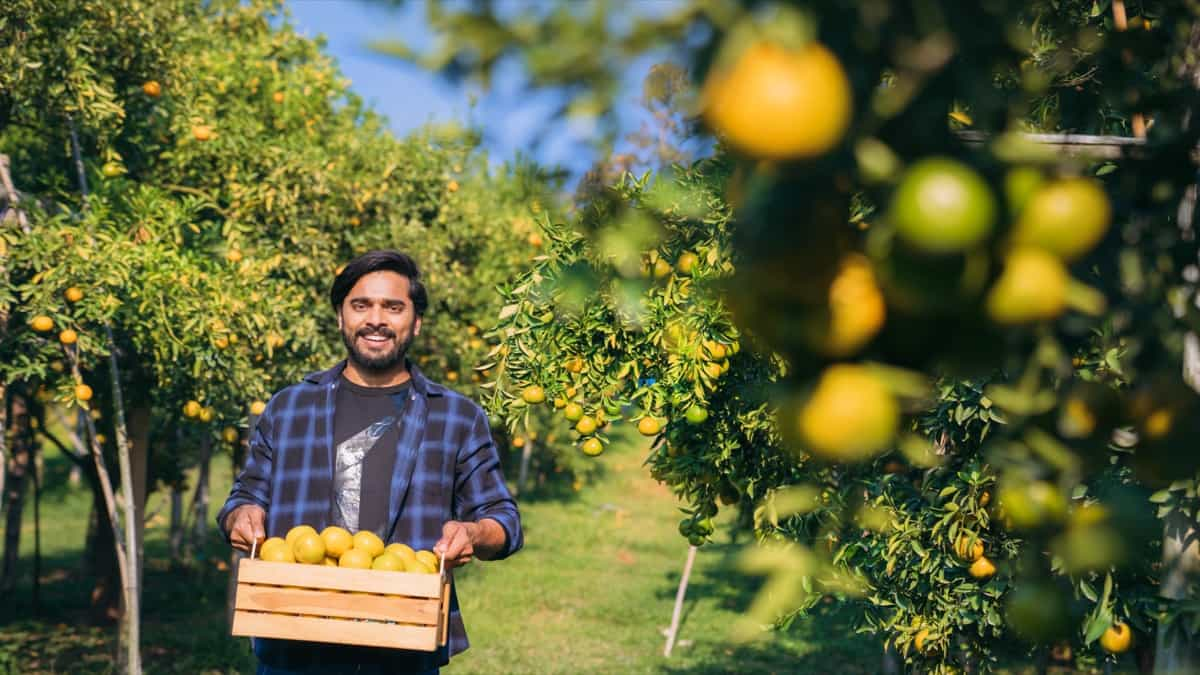
Acid lime (Citrus aurantifolia): It is also known as nimbu or neebu. It has a thin green or yellow skin that can be easily peeled off. It has a sour pulp with many seeds. It is mainly used for culinary purposes or processed into pickle or cordial. The major varieties of acid lime grown in India are Kagzi (the most widely grown), Pant lemon (the dwarf variety), Italian lemon (the seedless variety), Villafranca lemon (the cold-tolerant variety), and Eureka lemon (the thornless variety).
Grapefruit (Citrus paradisi): It is also known as chakotra or papanas. It has a thick yellow or pink skin that is difficult to peel off. It has a bitter-sweet pulp with many seeds. It is mainly consumed fresh or processed into juice or jam. The major varieties of grapefruit grown in India are Marsh Seedless (the seedless variety), Foster (the pink-fleshed variety), Duncan (the seedy variety), Red Blush (the red-fleshed variety), and Flame (the ruby red variety).
Pomelo (Citrus maxima): It is also known as chakotara or batabi lebu. It has a very thick green or yellow skin that can be easily peeled off. It has a sweet pulp with few seeds. It is mainly consumed fresh or processed into juice or salad. The major varieties of pomelo grown in India are Khasi (the most widely grown), Madhuri (the sweetest), Honey (the seedless variety), and Chandler (the pink-fleshed variety).
Land Preparation and Planting Techniques in Citrus Farming
Citrus fruits require well-drained, fertile, and loamy soil with a pH of 6.0 to 8.0. The soil should be free from salinity, alkalinity, and waterlogging. The land should be plowed thoroughly and leveled to make it suitable for planting. The planting season for citrus fruits from region to region, depending on the climatic conditions.
Generally, the planting is done in the rainy season (June to September) or in the winter season (November to February). The planting material for citrus fruits can be either seeds or vegetative propagules such as cuttings, buddings, or graftings. Seeds are used for raising rootstocks, which are then budded or grafted with the desired scion variety. Vegetative propagation ensures uniformity, early bearing, and disease resistance in the plants.
The most commonly used rootstocks for citrus fruits in India are Rangpur lime, Rough lemon, Cleopatra mandarin, Trifoliate orange, and Jatti Khatti. The planting distance for citrus fruits depends on the variety, the rootstock, the soil type, and the irrigation method. Generally, a spacing of 6 x 6 meters is followed for mandarins and sweet oranges, 5 x 5 meters for acid limes and lemons, and 8 x 8 meters for grapefruits and pomelos.
The planting pits should be dug at least one month before planting and filled with a mixture of topsoil, farmyard manure, and superphosphate. The plants should be planted in the center of the pits at the same depth as they were in the nursery. The plants watered immediately after planting and staked to provide support.
Pest and Disease Management in Indian Citrus Orchards
Citrus fruits are a significant crop in India, with a production of around 12.7 million tonnes in 2019-20. Major pests include Citrus canker, which causes lesions on leaves, twigs, and fruits, and Citrus greening, a viral disease caused by Candidatus Liberibacter spp. Transmitted by the Asian citrus psyllid. Control measures include using resistant varieties, pruning and burning infected plant parts, spraying copper-based fungicides, and sanitation of tools and equipment.
In case you missed it: Maximizing Yields and Profit from Sweet Lime Sustainably: A Comprehensive Guide
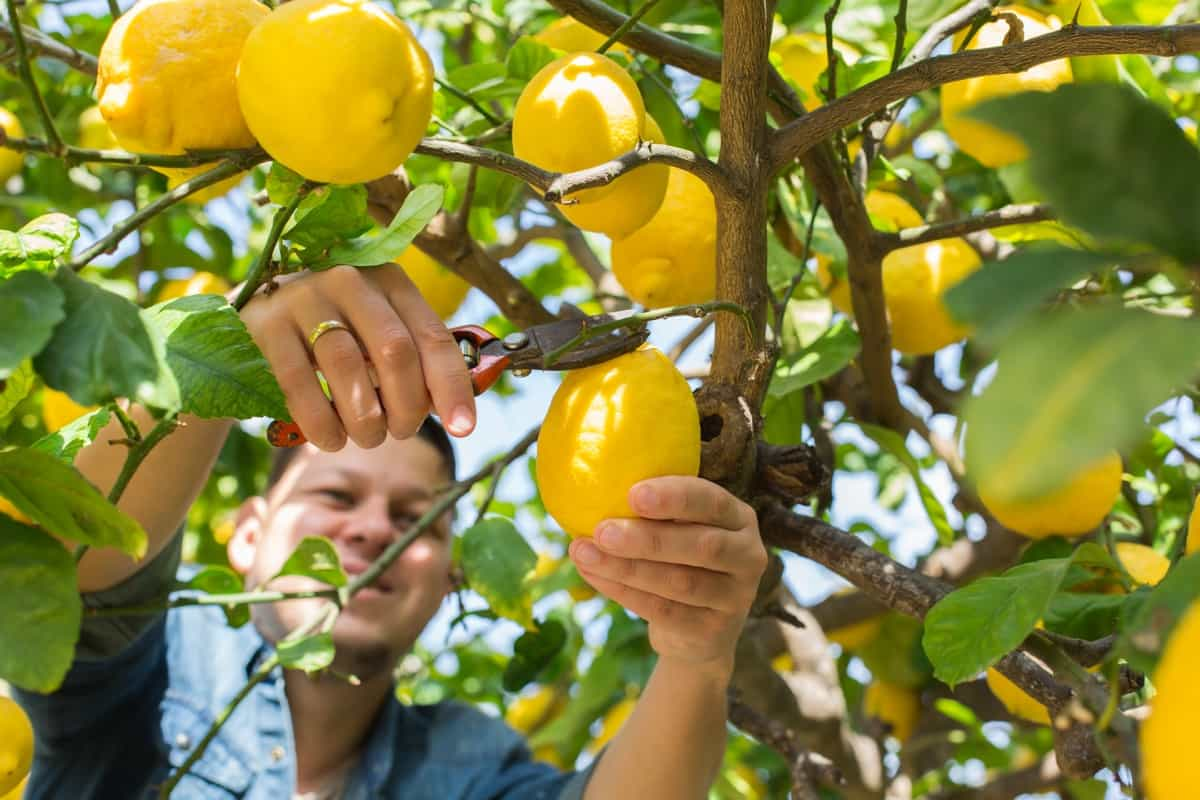
Citrus tristeza, a viral disease transmitted by aphids, causes the decline and death of trees grafted on sour orange rootstock, stem pitting, leaf curling, fruit drop, and reduced juice quality. Management strategies include using tolerant or resistant rootstocks, removal and destruction of infected trees, control of aphid vectors with insecticides and biological agents, and use of certified virus-free planting material.
Integrated pest management (IPM) is a holistic approach that combines cultural, mechanical, biological, and chemical methods while minimizing environmental impact. IPM practices for citrus include using healthy and certified planting material, selecting suitable varieties and rootstocks for different agro-climatic conditions, adopting proper spacing, pruning, irrigation, fertilization, and mulching practices, and monitoring pest and disease incidence and severity.
It also includes using ecological engineering techniques, using biological control agents, using chemical control methods, rotating pesticides, and implementing pre- and post-harvest sanitation measures. By following these IPM practices, citrus growers can effectively manage pests and diseases in their orchards, improving productivity and profitability.
Fertilization and Nutrient Management in Citrus Trees
Citrus trees require a variety of nutrients for optimal growth, yield, and quality. Generally, citrus trees need more nitrogen than other nutrients, followed by K, P, Ca, and Mg. Micronutrients are needed in smaller amounts but are important for preventing deficiency symptoms and maintaining tree health.
Leaf samples should be taken from non-fruiting branches of 4-6-year-old trees, preferably from the middle of the canopy, avoiding diseased, damaged, or abnormal leaves. Fertilizer application can be done through soil or foliar methods, with broadcasting, banding, or fertigation being the most common methods.
The fertilizer schedule for citrus trees varies depending on factors such as soil type, tree age, rootstock, cultivar, irrigation method, climate, and yield potential. A general guideline for fertilizing citrus trees in India is given. For young trees (1-3 years old), apply 500 g of N, 250 g of P2O5, and 750 g of K2O per tree per year in split doses during March-April, June-July, and September-October. Adjust the dose according to soil and leaf analysis results, yield potential, and fruit quality parameters.
Indian Government Policies and Support for Citrus Production
The National Horticulture Mission (NHM) and the Mission for Integrated Development of Horticulture (MIDH) are centrally sponsored schemes in India to promote the holistic development of horticulture, including citrus. The NHM covers all states and union territories except for the northeastern and Himalayan states. The HMNEH is a separate scheme for these regions.
In case you missed it: Best 20 Lemon Varieties: Sweet, Large, and Rare High Yield Cultivars

The MINDH is a comprehensive scheme that covers all states and union territories, providing financial assistance for various activities. The Rashtriya Krishi Vikas Yojana (RKVY) is a centrally sponsored scheme that incentivizes states to increase investment in agriculture and allied sectors, including horticulture. The APEDA is an autonomous body under the Ministry of Commerce, Industry responsible for promoting and regulating the export of agricultural and processed food products from India.
NAFED, established in 1958, is organization of marketing cooperatives for agricultural produce in India. It procures agricultural commodities from farmers at remunerative prices and sells them in domestic and international markets. NAFED also undertakes activities such as market intervention, price stabilization, buffer stocking, and export promotion.
Global Market Trends and Opportunities for Indian Citrus Exports
Citrus fruits are a highly traded global commodity, with a global production of 124.3 million tonnes in 2019-20 and a trade volume of 18.8 million tonnes. Major producers include China, Brazil, India, Mexico, and Spain, while exporters include Spain, South Africa, Turkey, Egypt, and Morocco. Importers include China, Russia, the USA, Germany, and France. India, one of the largest producers, exported 1.3 lakh tonnes worth Rs 514 crore in 2019-20, accounting for only 0.7% of the global trade volume and 0.4% of the trade value.
Major export destinations include Bangladesh, Nepal, UAE, Saudi Arabia, and Sri Lanka. However, factors such as low productivity, poor quality standards, high post-harvest losses, inadequate processing facilities, high transportation costs, and non-tariff barriers limit the export potential. Opportunities for increasing export potential include:
- Increasing demand for fresh and processed citrus products.
- Diversification of varieties.
- Improving quality standards.
- Enhancing marketing infrastructure.
Where Are Most Citrus Fruits Grown in India?
Citrus fruits are grown in various parts of India, but the major production states are Maharashtra, Andhra Pradesh, Madhya Pradesh, Punjab, Assam, Karnataka, Tamil Nadu, and Rajasthan. These states account for about 80% of the total citrus area and 85% of the total citrus production in the country. Citrus fruits are mainly cultivated in tropical and sub-tropical regions, where they thrive in well-drained soils and moderate temperatures.
Citrus Yield Per Acre in India
The yield of citrus fruits per acre varies depending on the type of fruit, the variety, the rootstock, the climate, the soil, the irrigation, the nutrition, the pest and disease management, and the harvesting and post-harvest handling practices. The average yield of citrus fruits per acre in India was 9.8 tonnes in 2018-19. However, some high-yielding varieties can produce up to 20-25 tonnes per acre under optimal conditions.
Citrus Cultivation Cost Per Acre
The cost of cultivation of citrus fruits per acre also depends on various factors such as the type of fruit, the variety, the rootstock, the planting density, the irrigation system, the fertilizer and pesticide application, the labor requirement, and the market price. The cost of cultivation of Kinnow mandarin per acre was Rs. 51,720 in 2016-17. The major components of cost were labor (37%), fertilizer (16%), irrigation (13%), plant protection (10%), and interest on fixed capital (9%).
In case you missed it: High-Density Lemon Plantation: Spacing, Plants Per Acre, Techniques, Cost, and Yield
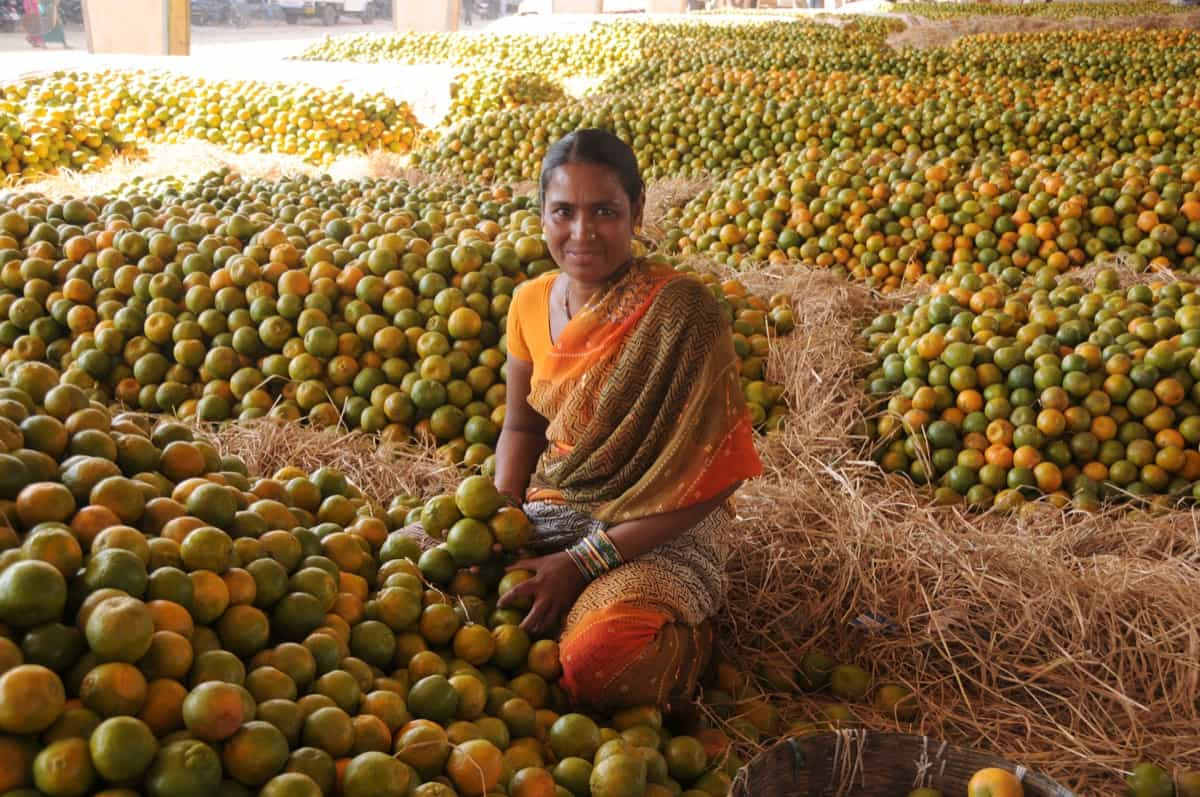
Cultivation Farming Profit Per Acre
The profit from the cultivation of citrus fruits per acre is calculated by subtracting the cost of cultivation from the gross returns. The gross returns depend on the yield and the market price of the fruit. The gross returns from Kinnow mandarin per acre were Rs. 1,24,800 in 2016-17. The net returns were Rs. 73,080 per acre, which implies a benefit-cost ratio of 2.41.
List of Common Citrus Fruits
Citrus fruits, part of the Rutaceae family, are characterized by their juicy pulp segments enclosed by a thick rind. Common citrus fruits grown in India include oranges, Mandarins, lemons, limes, grapefruits, and pomelos. Oranges are sweet and sour, with bright orange peels and pulp.
Mandarins are small, easy-to-peel fruits with loose orange or yellow peels and pulp. Lemons are sour and acidic, with yellow peels and pulp. Limes are sour and acidic, with green peels and pulp. Grapefruits are large, bitter fruits with yellow or pink peels and pulp. Pomelos are large, sweet fruits with green or yellow peels and pulp.
Citrus Fruit Cultivation by State
The Ministry of Agriculture and Farmers Welfare reported that the top 10 citrus fruit cultivation states in India in 2018-19 were Maharashtra, Andhra Pradesh, Madhya Pradesh, Punjab, Assam, Karnataka, Tamil Nadu, Rajasthan, Gujarat, and Haryana, in terms of area and production.
Citrus Fruit Cultivation by State
| State | Area (in ‘000 hectares) | Production (in ‘000 metric tons) | Productivity (kg/hectare) |
| Maharashtra | 279.7 | 3,894.0 | 13.9 |
| Andhra Pradesh | 121.5 | 1,207.0 | 9.9 |
| Madhya Pradesh | 97.0 | 1,020.0 | 10.5 |
| Punjab | 52.8 | 1,050.0 | 19.9 |
| Assam | 49.4 | 393.0 | 8.0 |
| Karnataka | 47.7 | 540.0 | 11.3 |
| Tamil Nadu | 46.4 | 480.0 | 10.3 |
| Rajasthan | 44.4 | 450.0 | 10.1 |
| Gujarat | 35.5 | 390.0 | 11.0 |
| Haryana | 23.9 | 300.0 | 12.6 |
| Others | 125.9 | 883.7 | 7.0 |
| India Total | 923.2 | 10,607.7 | 11.5 |
In case you missed it: Government Subsidy for Fruit Crops in India: How to Avail up to 40-60% under MIDH
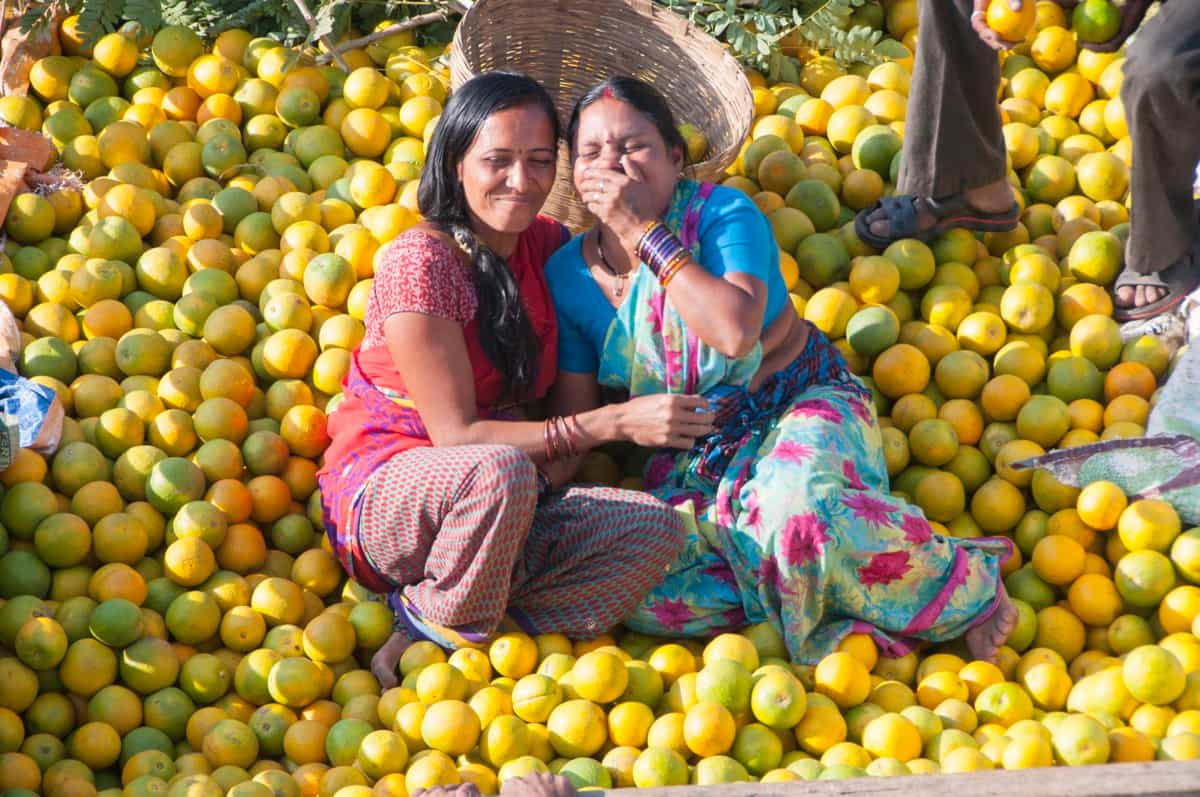
Conclusion
Citrus fruits are a crucial horticultural crop in India, providing nutritional and economic benefits. Grown in various agro-climatic zones, Maharashtra leads in production. Yield and quality depend on factors like fruit type, variety, rootstock, climate, soil, irrigation, nutrition, pest management, and harvesting practices.
- Types of Pesticides Used in Agriculture: A Beginner’s Guide
- Economical Aquaculture: A Guide to Low-Budget Fish Farming
- 15 Common Planting Errors That Can Doom Your Fruit Trees
- How to Make Houseplants Bushy: Effective Tips and Ideas
- Innovative Strategies for Boosting Coconut Pollination and Yield
- Pollination Strategies for Maximum Pumpkin Yield
- The Complete Guide to Chicken Fattening: Strategies for Maximum Growth
- Natural Solutions for Tulip Problems: 100% Effective Remedies for Leaf and Bulb-Related Issues
- Revolutionizing Citrus Preservation: Towards a Healthier, Greener Future
- Natural Solutions for Peony Leaf and Flower Problems: 100% Effective Remedies
- Maximizing Profits with Avocado Contract Farming in India: A Comprehensive Guide
- Natural Solutions for Hydrangea Problems: 100% Effective Remedies for Leaf and Flowers
- The Ultimate Guide to Choosing the Perfect Foliage Friend: Bringing Life Indoors
- From Sunlight to Sustainability: 15 Ways to Use Solar Technology in Agriculture
- The Ultimate Guide to Dong Tao Chicken: Exploring from History to Raising
- The Eco-Friendly Makeover: How to Convert Your Unused Swimming Pool into a Fish Pond
- Mastering the Art of Delaware Chicken Farming: Essentials for Healthy Backyard Flocks
- 20 Best Homemade Fertilizers for Money Plant: DIY Recipes and Application Methods
- How to Craft a Comprehensive Free-Range Chicken Farming Business Plan
- Brighten Your Flock: Raising Easter Egger Chickens for Beauty and Bounty
- How to Optimize Your Poultry Egg Farm Business Plan with These Strategies
- Subsidy for Spirulina Cultivation: How Indian Government Schemes Encouraging Spirulina Farmers
- Ultimate Guide to Raising Dominique Chickens: Breeding, Feeding, Egg-Production, and Care
- Mastering the Art of Raising Jersey Giant Chickens: Care, Feeding, and More
- Ultimate Guide to Raising Legbar Chickens: Breeding, Farming Practices, Diet, Egg-Production
- How to Raise Welsummer Chickens: A Comprehensive Guide for Beginners
- How to Protect Indoor Plants in Winter: A Comprehensive Guide
- Ultimate Guide to Grow Bag Gardening: Tips, Tricks, and Planting Ideas for Urban Gardeners
- Guide to Lotus Cultivation: How to Propagate, Plant, Grow, Care, Cost, and Profit
- Agriculture Drone Subsidy Scheme: Government Kisan Subsidy, License, and How to Apply Online
- Ultimate Guide to Raising Araucana Chickens: Breed Profile, Farming Economics, Diet, and Care
- Bringing Hydroponics to Classroom: Importance, Benefits of Learning for School Students
- Ultimate Guide to Raising Polish Chickens: Breed Profile, Farming Economics, Diet, and Care
- Ultimate Guide to Raising Australorp Chickens: Profile, Farming Economics, Egg Production, Diet, and Care
- Silkie Chicken Farming: Raising Practices, Varieties, Egg Production, Diet, and Care
- Sussex Chicken Farming: Raising Practices, Varieties, Egg Production, Diet and Care